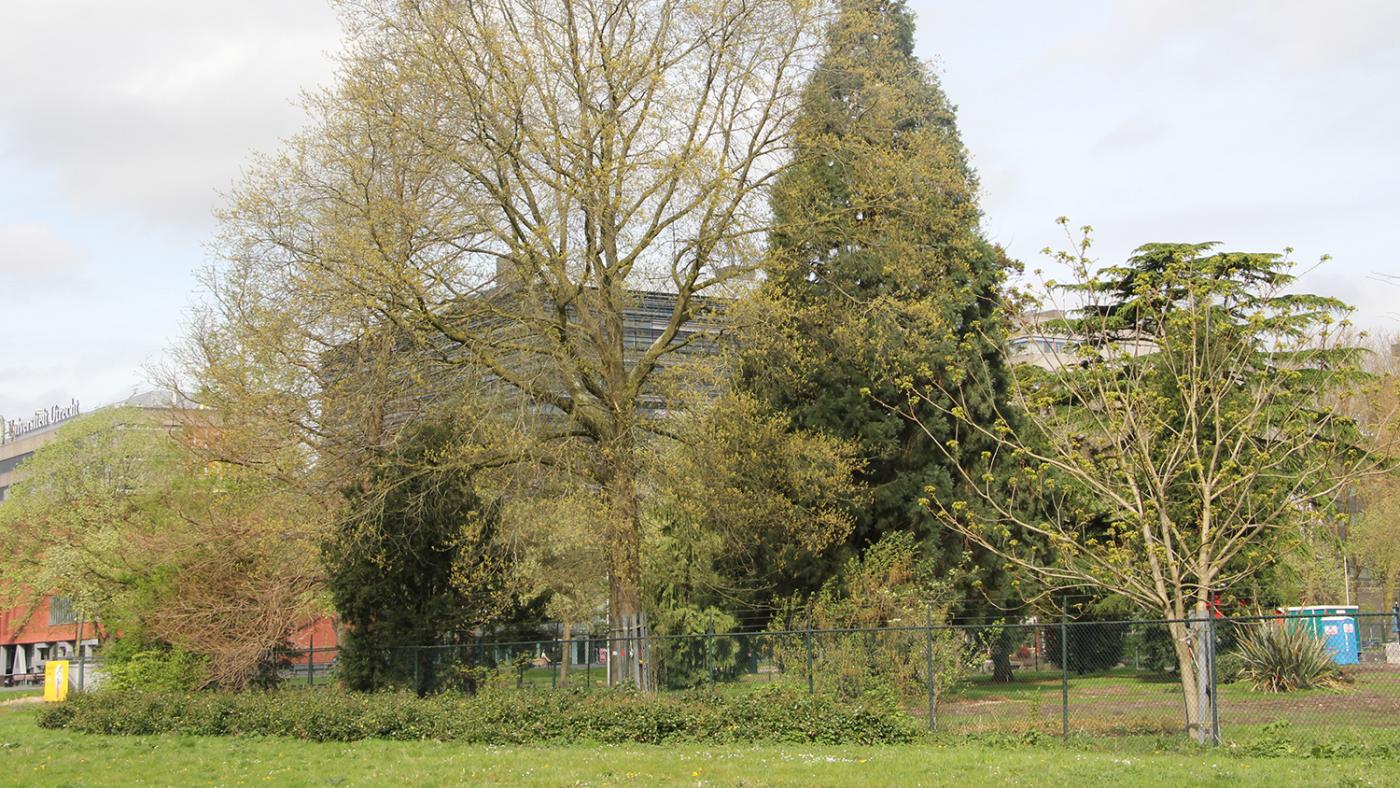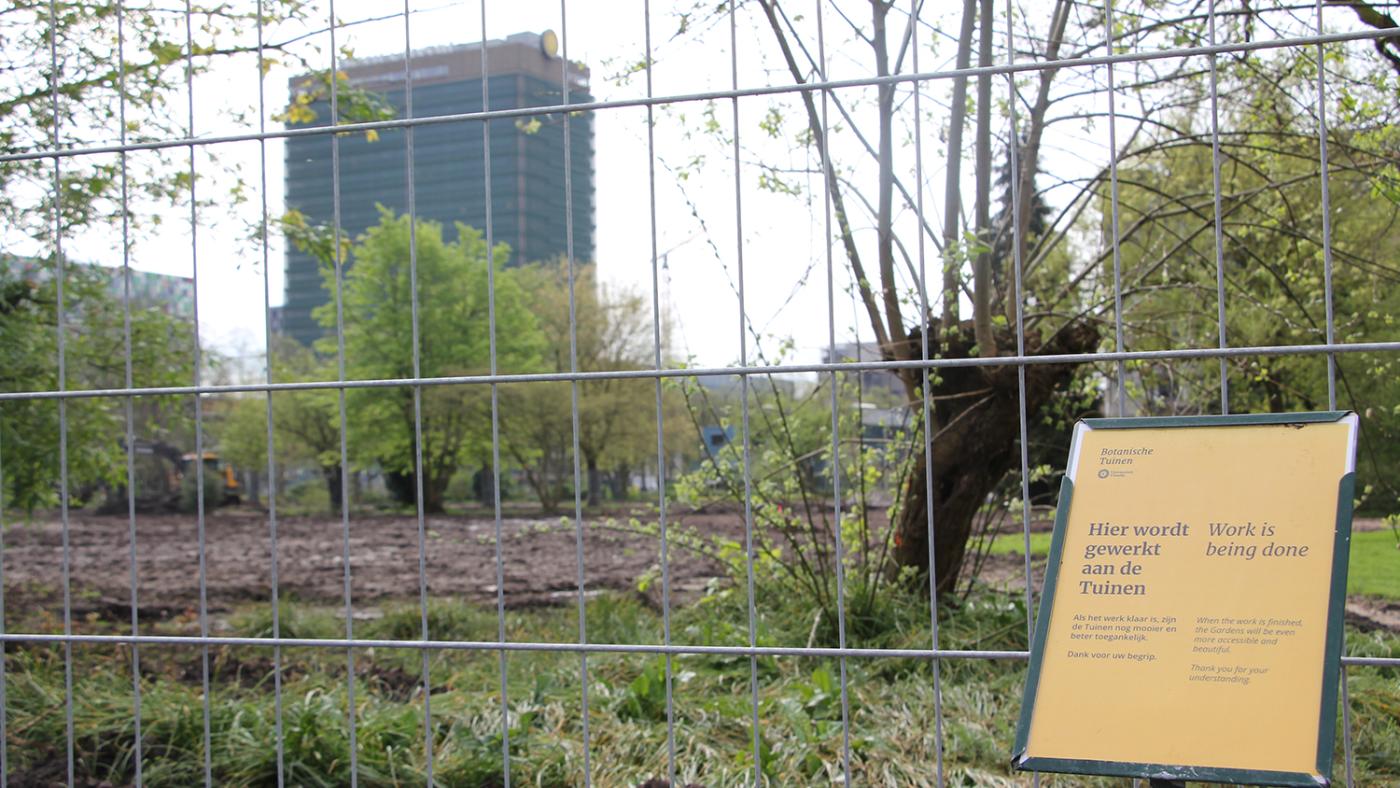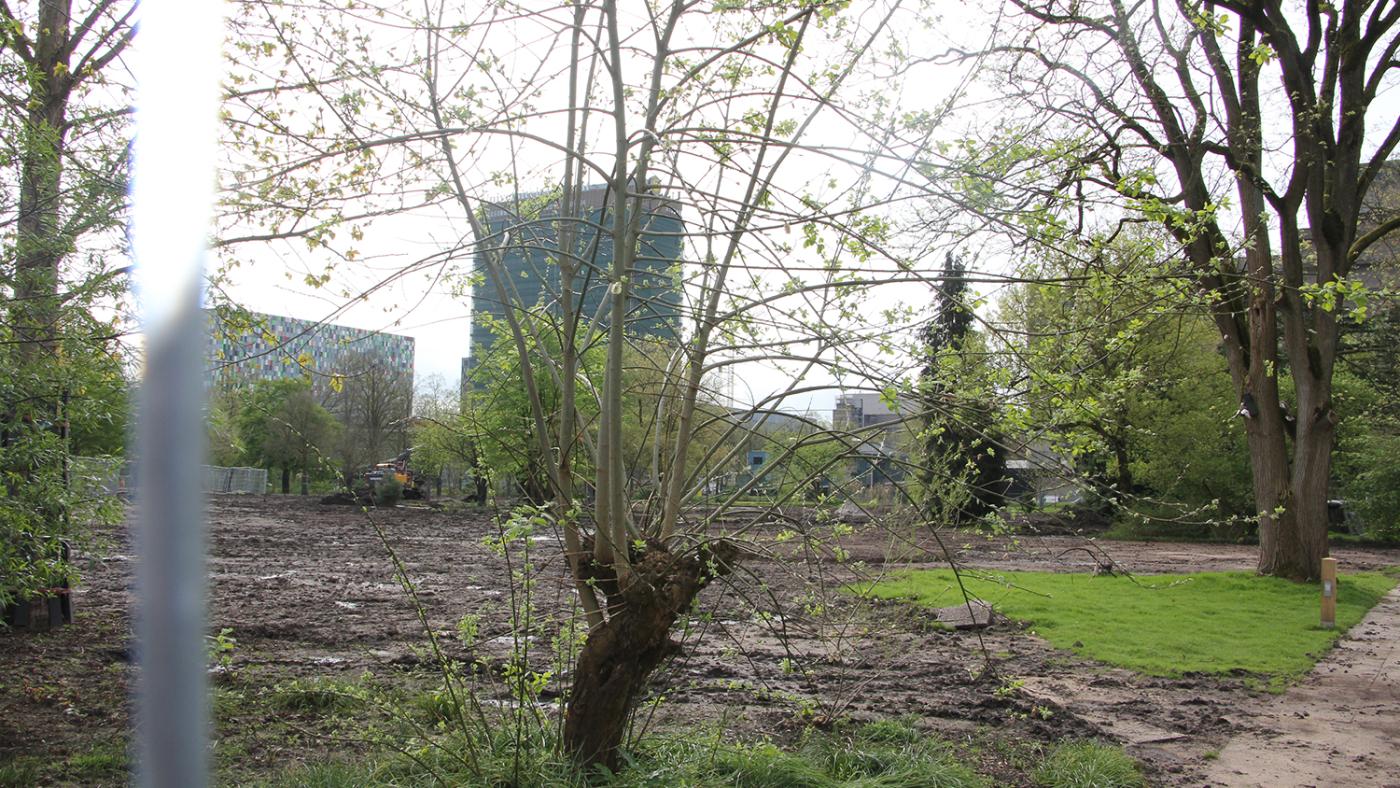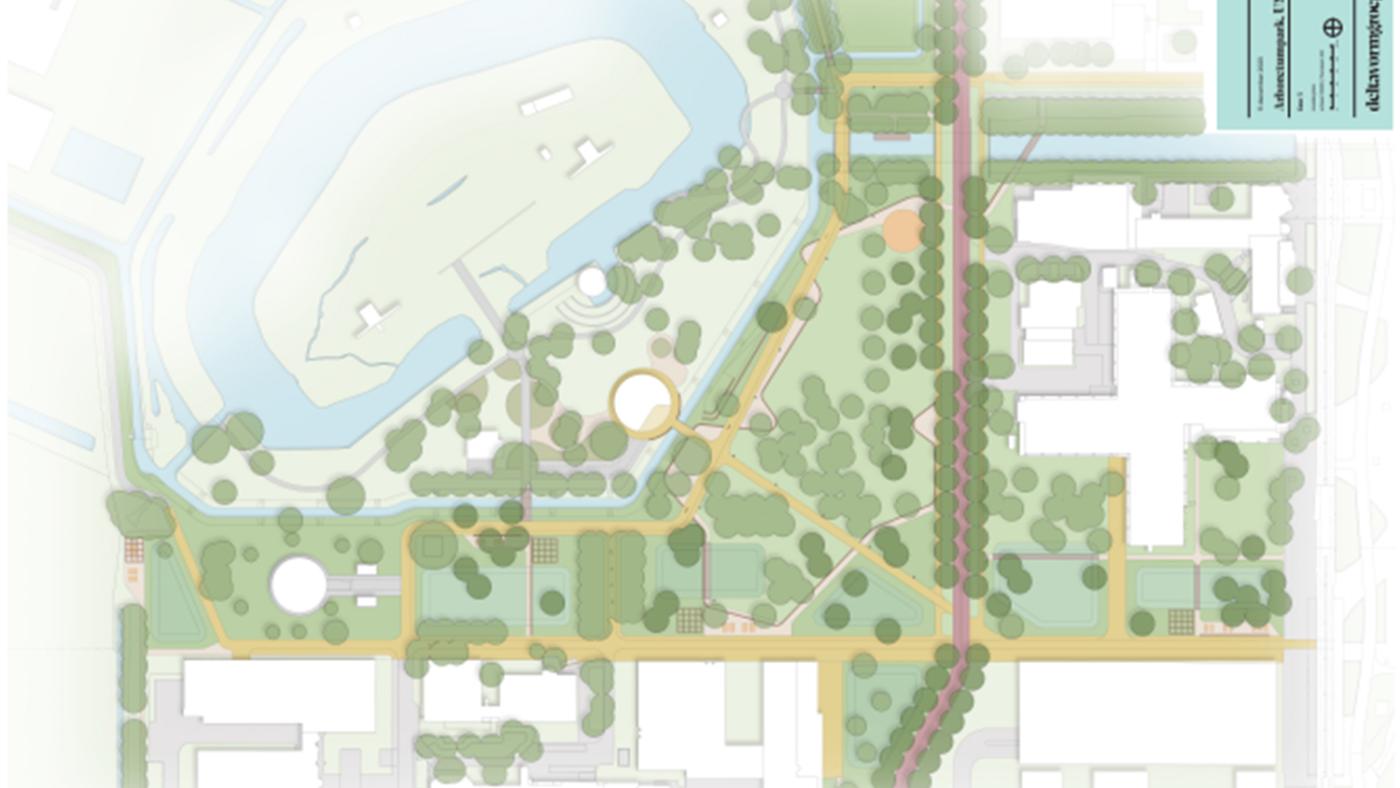Part of the Botanical Gardens will lose its fences
‘A Central Park for Utrecht Science Park’

The new park will be located in the southwestern part of the Botanical Gardens, at the corner of Leuvenlaan and Budapestlaan. Its working title is Arboretum Park – arbor means tree in Latin, so an arboretum is a botanical garden with trees. The new park will be freely accessible and offer a green connection between the centre of Utrecht Science Park and the Minnaert and Koningsberger buildings. Its concept is somewhat based on New York's Central Park, according to Maarten Reichwein, Senior Programme Manager for the Botanical Gardens. The new park will be opened in the academic year 2025-2026.
"Because of its fences, the Botanical Gardens currently form a barrier between these two areas,” says Jaime Loupatty from Corporate Real Estate & Campus, which is responsible for the project. To change that, parts of the garden fences will be moved to the historical line of the outer watercourse around the fort. The idea is to restore this watercourse to its former glory.

But, first, one must plant all the trees. It’s unclear how many of them the new park will have, according to horticulturist Gerard van Buiten. “It will not be a forest. The park will have an open lawn with solitary trees and groups of trees.” Some of the tree specimens that will be outside of the fences include a giant sequoia or mammoth tree, a Chinese poplar tree, and a Spanish oak tree.
“One of the rarest trees of the Botanical Gardens will be publicly accessible, too,” adds Van Buiten. He’s referring to a Picrasma quassioides, also known as bitterwood, whose leaves turn purple in autumn. Van Buiten says there aren’t many mature specimens of this tree in Europe. “We know exactly where our tree's seeds were collected in the wild in Korea," he continues, proudly. “It’s a beautiful, old specimen.” Each of the trees will be given a nameplate.
The fences around the trees offer protection, so removing them brings about a tension between recreation and biodiversity. Van Buiten, Loupatty and Reichwein are aware of that. “Still, we’re going to try to improve both,” says Loupatty. “We have to find a clever way to create recreation zones,” Van Buiten adds, “but we also want to stimulate biodiversity by letting some parts of the park go wild.” Practice will show which parts of the park can go wild. “We could decide not to mow a patch of grass to let wildflowers grow but, if students play there during the introduction week, our efforts will be useless." That’s why they’re going for "practice-based learning", adjusting plans according to experience.

Circular pavilion
The Botanical Gardens attract around 180,000 visitors a year. The freely accessible tree park is supposed to attract about the same number of visitors. “Our main goal is to create a place where people can enjoy the garden outside of opening hours,” Loupatty explains. However, it’s not an option to remove all fences. “Part of the reason for keeping fences is rabbits", adds Loupatty. Rabbits eat plants but ignore trees. “Unfortunately, there are also a lot of people who try to steal plants from the garden,” Reichwein adds.
In time, the main entrance to the Botanical Gardens will move to a new spot as well: they will be closer to Leuvenlaan Avenue. The entrance will lead to the Circular Pavillion announced in 2019, which will also house the cafeteria and offer meeting spaces (sustainable activities will be given priority in their use). A programme council will oversee the programming.
“This is the first building the university is designing especially for a public function,” Reichwein says proudly. The pavilion is meant to compensate for the lack of indoor spaces in the Botanical Gardens. It is expected to be inaugurated in 2027.
When the park is ready and the circular pavilion is open, yet another construction phase awaits. The idea is to extend the park in the direction of the university’s other buildings. That means the parking lot at Budapestlaan will have to make way for it, but that can’t be done until cars can be parked elsewhere on campus. The Executive Board is yet to make a definitive decision about this.

De nieuwe plattegrond van een stukje USP. Het afgesloten deel van de Botanische Tuinen licht achter de doorgetrokken waterloop. Het park ligt op de hoek van de Leuvenlaan en de Budapestlaan.